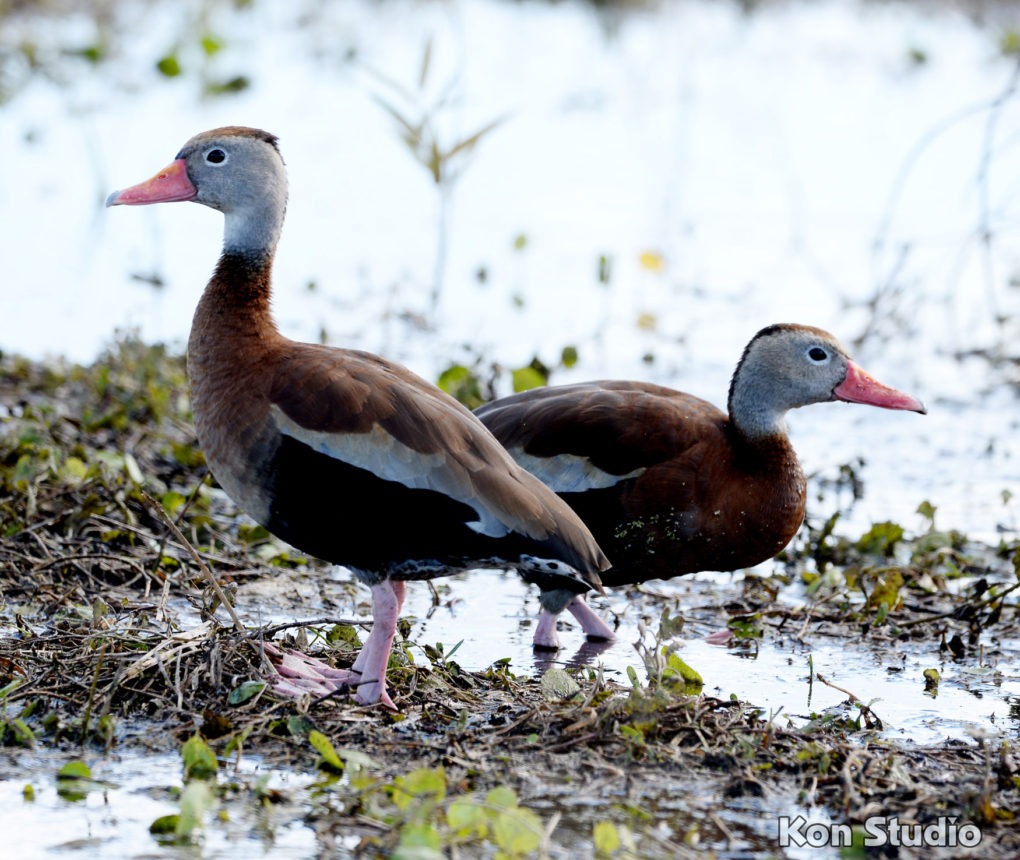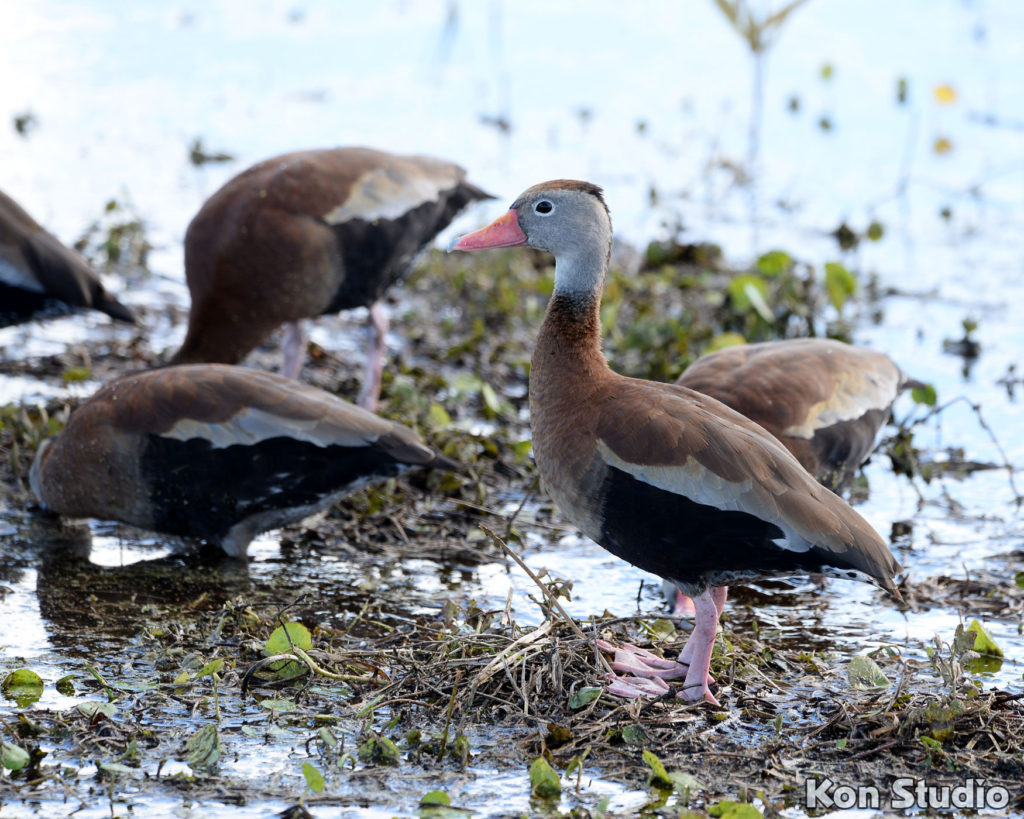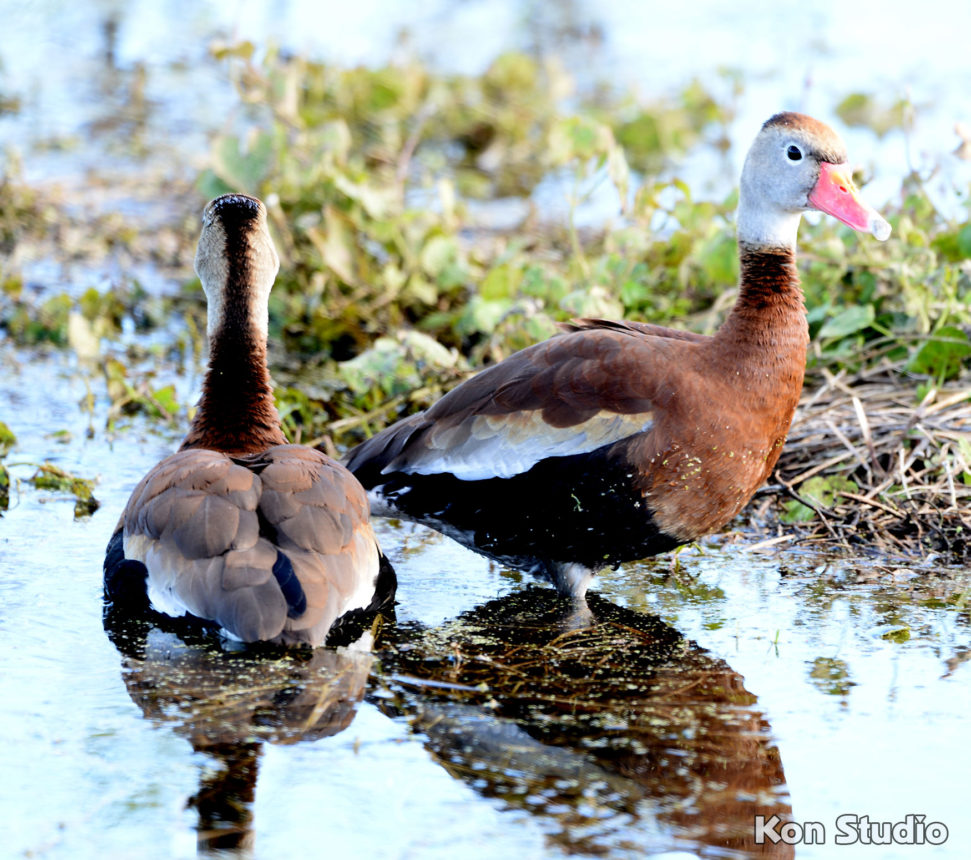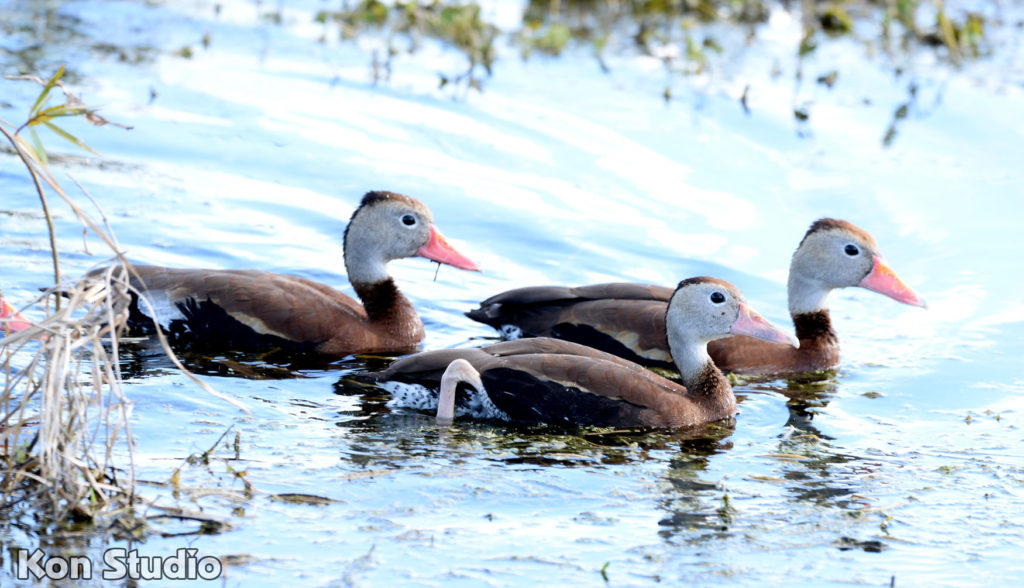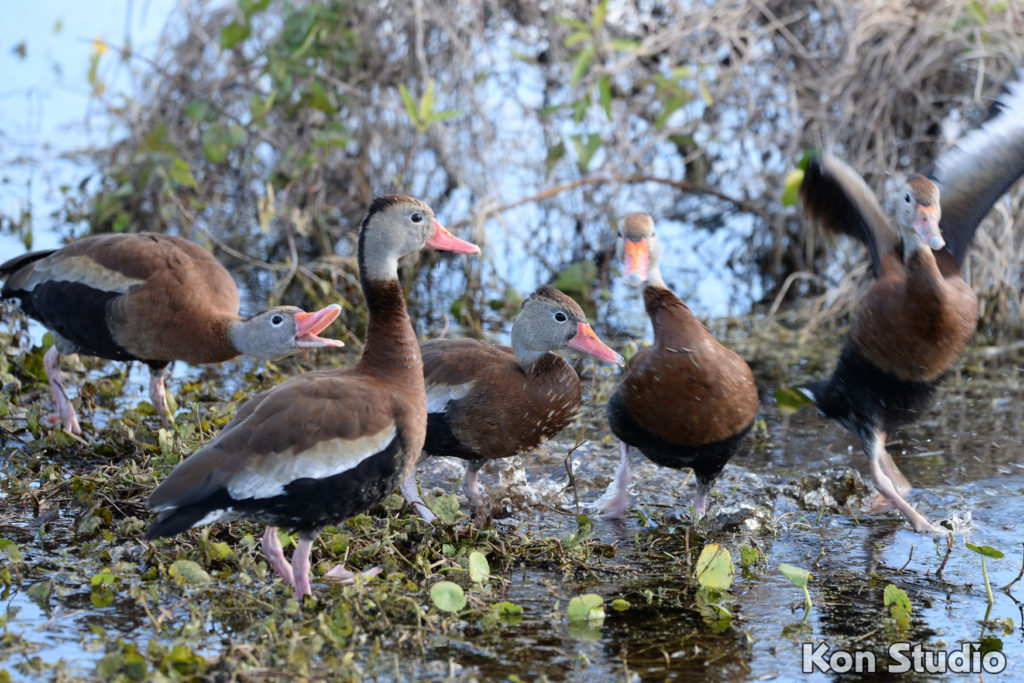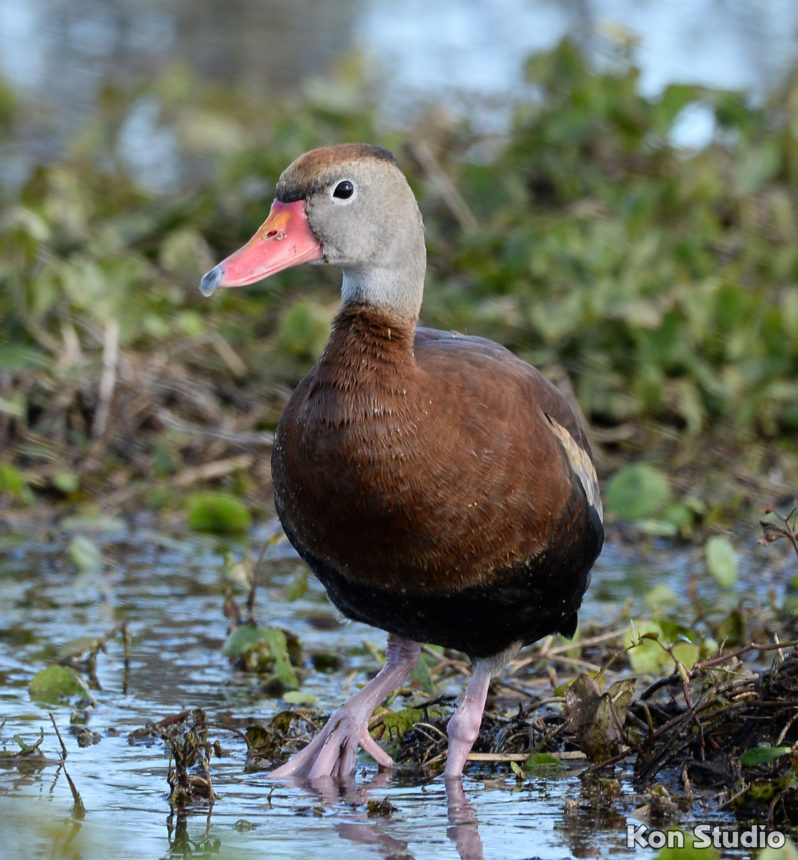Black-bellied Whistling-Duck
Once known as Tree Ducks, the striking Black-bellied Whistling-Ducks, (Dendrocygna autumnalis), are often seen in flocks, sometimes with up to 1000 birds. They can be spotted perching on fences, electric lines, or in Spanish Moss.
Look for Black-bellied Whistling-Ducks near freshwater in areas such as marshes, lagoons, and swamps. They prefer areas with trees and thick vegetation. You may find a flock foraging in a field, mangroves, freshwater ponds or lakes, or your yard. Their diets consist of mostly plants such as grasses, wetland plants, and sedges, as well as agricultural crops such as corn. Snacks include spiders, leeches, beetles, and snails.
Pairs form life-long bonds in the winter. Together, they will select a tree cavity for the nest. The female will lay 9-18 eggs on the debris in the cavity. She may also lay her eggs in the nest of another whistling duck. The incubation period lasts for 25-30 days and the nestling period for 10-13 days. Hatchlings are nearly independent at birth.
As year-round residents of Florida, Black-bellied Whistling-Ducks are rapidly expanding their breeding range northward. Once considered non-migratory, both the northern-most and southern-most populations are now migratory.

